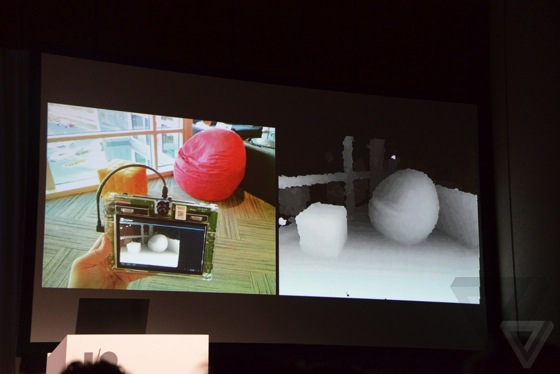A panel composed of former military officials, legal advisors, and others believes that America's drone strike program could be creating a more unstable, violent world. In a report released today, a group of former military and government officials said that relatively low-risk, increasingly common missile strikes by unmanned aerial vehicles (UAVs) "risks increasing instability and escalating conflicts," as other countries emulate America's strategy of targeting suspected terrorists even outside official war zones. While it said UAVs should be "neither demonized nor glorified," it urged the Obama administration to consider the effect they were having on warfare, including a potential slippery slope as other countries consider their own drone programs.
'Neither demonized nor glorified'
After President Barack Obama promised to weigh changes to the program, global security think tank Stimson created a 10-person panel to suggest reforms. Members included Bush-era National Security Counsel and State Department advisor John Bellinger III, former CIA Counterterrorism Center deputy director Philip Mudd, and former CIA general counsel Jeffrey Smith. It was co-chaired by retired general and former US Central Command head John Abizaid and by Rosa Brooks, a former counselor to the Undersecretary of Defense for Policy and a professor at Georgetown University's law school. Members met periodically over the course of a year and focused on near-term counterterrorism strikes, rather than future autonomous warfare or drone issues as a whole.
The resulting report raises many of the same issues that critics of drone strikes have had for years, and some of which aren't unique to drones. Most targeted strikes kill only people the US has identified as terrorists, but there have still been unambiguous civilian casualties. Even on the most utilitarian level, this can create blowback for the United States. And anything that the US does, other countries with UAVs are likely to mimic — including a disregard for national boundaries as strikes have extended from clearly acknowledged battlefields into Yemen and Pakistan. The program has been operated under extreme secrecy; the White House refused to acknowledge its existence for years, and even more recently, little information has been released.
A PlayStation mentality?
There are also, however, benefits and dangers specific to unmanned planes themselves. The report, interestingly, refuted what the ACLU has called the "PlayStation mentality," the idea that remote operation makes killing easy. "UAVs permit killing from a safe distance — but so do cruise missiles and snipers' guns," they wrote. "Ironically, the men and women who remotely operate lethal UAVs have a far more 'up close and personal' view of the damage they inflict than the pilots of manned aircraft." They cited a 2011 study in which nearly half of drone operators reported high levels of stress, a finding that was backed up in 2013 by the Department of Defense. The report's claim that this is because they "watch their targets for weeks or even months ... before one day watching on-screen as they are obliterated," though, may not be totally accurate. The 2011 study's authors attributed the stress levels to long hours as drone use steadily increased; they were surprised to find that relatively little stress was a result of watching targets.
Soldiers may not find killing with drones easy, but strategists do
It also agreed with President Obama's claim that drones, compared to traditional aircraft, actually minimize civilian casualties. "Equipped with imaging technologies that enable operators, who may be thousands of miles away, to see details as fine as individual faces, modern UAV technologies allow their operators to distinguish between civilians and combatants far more effectively than most other weapons systems," it says. "The frequency and number of civilian casualties resulting from US drone strikes also appear to have dropped sharply in recent years, as UAV technologies have improved and targeting rules have been tightened."
But even if operators themselves take the process seriously and technology improves, unmanned vehicles still let the military expand the scope of war. "The increasing use of lethal UAVs may create a slippery slope leading to continual or wider wars," the report says. Elsewhere, it writes that "the availability of weaponized UAVs almost surely has led US decision-makers to adopt counterterrorism tactics that probably would have been deemed too risky or politically unacceptable had UAVs not been an option." Estimated strikes increased dramatically in the early years of Obama's presidency, and other countries could follow suit. Drones "create an escalation risk insofar as they may lower the bar to enter a conflict, without increasing the likelihood of a satisfactory outcome."
Straightening a slippery slope
Armed drones have become a more and more integral part of the war on al-Qaeda, but the report says that little has been done to examine their use. "To the best of our knowledge... the US executive branch has yet to engage in a serious cost-benefit analysis of targeted UAV strikes as a routine counterterrorism tool," it wrote. In addition to carrying out such a study, it decried a culture of secrecy and a lack of oversight. "We do not believe it is consistent with American values for the United States to carry on a broad, multi-year program of targeted strikes in which the United States has acknowledged only the deaths of four US citizens, despite clear evidence that several thousand others have also been killed," it wrote.
The secrecy of targeted strikes is not 'consistent with America's values'
Among other things, the President should appoint an independent commission similar to the one that exists for surveillance oversight. While the commission would not review strikes beforehand, it would examine them after the fact, looking for mistakes or illegal strikes. It would also be tasked with fixing the perception of America's drone program, creating a way compensate civilians for deaths or damages and ensuring that strikes do not "create more enemies than we take off the battlefield," a quote from Obama. Like the Council on Foreign Relations and others, it also recommends shifting control of the targeted killing program towards the military, rather than the CIA.
More generally, the board calls for the US to work with allies to develop "appropriate international norms" for drone strikes, to evaluate and prepare for likely technological developments, and to tighten export controls on UAVs. It's hoping to find a way to prevent other countries from repeating America's missteps — and, on a more pragmatic level, stop them from attacking the US.
Obama and Congress have already attempted to reform the drone program to some extent. The Senate approved an intelligence provision that would have forced the White House to disclose how many people a year were killed in strikes, then removed it after Director of National Intelligence James Clapper claimed it could undermine national security. The House proposed a similar bill, the Targeted Lethal Force Transparency Act, in April. But as with the attempts to reform surveillance, these efforts have been criticized as coming up short.

 Popular blocky sandbox game Minecraft is closing in on 54 million copies sold across all platforms, says Mojang's Patrick Geuder, who also added via Twitter that the console (Xbox 360 and PS3) versions of the game have now surpassed sales of the PC...
Popular blocky sandbox game Minecraft is closing in on 54 million copies sold across all platforms, says Mojang's Patrick Geuder, who also added via Twitter that the console (Xbox 360 and PS3) versions of the game have now surpassed sales of the PC...





































